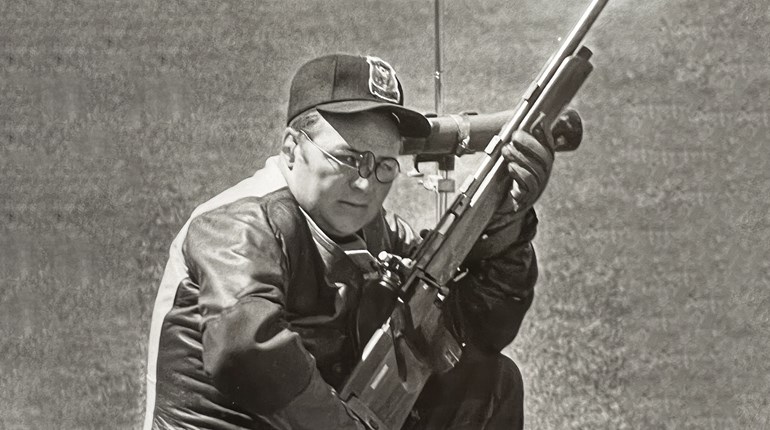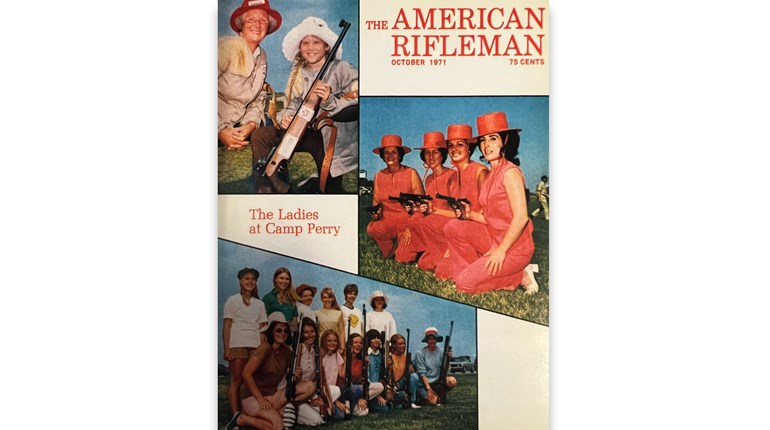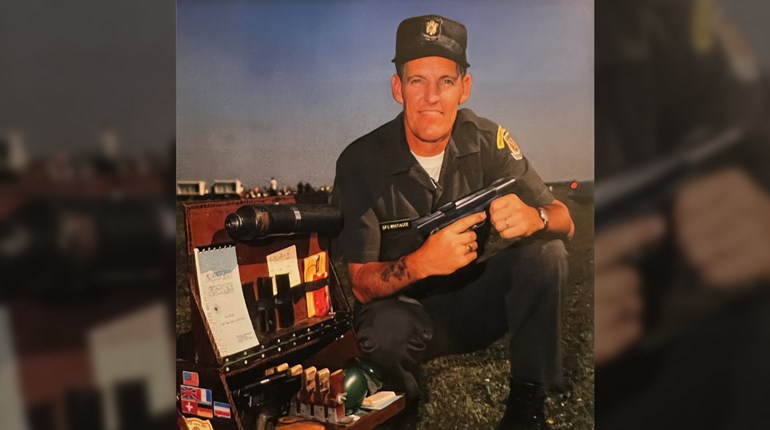
The greatest exhibition shooter of all time—male or female—was a young woman from Darke County, Ohio: Annie Oakley (1860-1926). Just 5 feet tall and weighing barely 100 pounds, Annie was blessed with extraordinary hand-eye coordination and all-around athleticism, giving her the ability to accurately shoot most any firearm she picked up—rifle, shotgun or handgun.
In April of 1900, Annie told a reporter from the outdoor publication Shooting and Fishing about her guns. “As to my own collection of firearms, I have many shotguns, most of them hammerless. They weigh about six pounds [each]. I use 12-gauge guns chiefly, because of the readiness with which I can procure ammunition for such gauge. I have, however, used with success the smaller gauges. With rifles, I use the caliber best suited to my work. My exhibition work is chiefly with .32-caliber. With revolver, I use various calibers from .32 to .44. With pistol, I use the .22 caliber.”
What “work” was Annie referring to? She is best remembered for the 17 years she and her husband-manager Frank Butler spent with “Buffalo Bill” Cody’s Wild West. Annie was always the first act following the opening Grand Review, aweing audiences with a number of “trick” shots: shooting an apple off her pet dog’s head; shooting over her shoulder by using the blade of a Bowie knife as a mirror; splitting a playing card held on edge in Frank’s hand; shooting while standing on the back of a galloping horse; shooting double targets while riding a bicycle; shooting flames off candles as they rotated on a wheel; shooting a dime out of Frank’s fingers; and individually shattering six thrown glass balls in the air before they hit the ground; to mention only a few of her varied, stupendous shooting feats.
Of all the thousands of performers involved in the Wild West troupe through the years, Buffalo Bill permitted only himself, Annie Oakley and a very few other trusted marksmen to use live ammunition during performances. Everyone else shot blanks.
Not surprisingly, Annie Oakley owned many, many firearms during her lifetime, her stock in trade. Some of the guns she and Frank purchased, while others were given to her by gun manufacturers in hopes that she would shoot them during exhibitions. Others were presented to her by heads of state or other well-heeled, adoring fans. But only a few became her go-to guns, the ones she relied upon for public performances or took hunting, as both Annie and Frank were avid wingshooters. The following are just a few of those now-famous firearms:
Winchester Model 1873 Rifle: This .44-40 caliber lever-action was presented to Annie Oakley by Bill Cody. The gun is unusual in that its barrel is smooth-bored, not rifled. During performances, Annie would shoot cartridges loaded with less than half an ounce of #7.5 shot, rather than a solid bullet. This adaptation from solid bullets to shot made the gun safer to shoot at flying targets in the show arena.
Cody made that change in 1883 when his Wild West was performing outdoors in Brooklyn, New York. It seems the neighbors were complaining that some of the solid bullets Cody and Annie had been firing were breaking windows in a greenhouse more than a block and a half away from the arena!
Annie used a similar version of this rifle (Model 92) when Thomas Edison filmed her shooting at his Menlo Park, New Jersey, film studio in 1894--one of the first movies ever made!
Lancaster Shotgun: Annie came into possession of this shotgun in an unusual way. In 1887, British gunmaker Charles Lancaster watched Annie shoot with less than expected success at English blue-rock pigeons. The birds “flew like lightning,” her husband, Frank, commented. Lancaster had seen Annie shoot in various Wild West performances, so well knew her skills, but observed that her guns fit her poorly because of her diminutive size. As a result, Lancaster built this shotgun especially for Annie, from her personal body measurements. After firing the gun, Annie was so impressed with its accuracy and ease of shooting that she specified all of her future shotguns and rifles have the same dimensions. An escutcheon plate below the stock is engraved: Miss Annie Oakley 1887.
Parker Brothers Shotgun: These shotguns, built from 1867 to 1942, are today considered some of the finest and most collectable of American-made shotguns. Not only did Annie Oakley prefer Parkers, but other celebrities owned them as well, including the movie star Clark Gable. Most Parkers are double-barreled side-by-side break-actions, but a lesser number of single-barrel guns were also manufactured, specifically for trap shooting.
Stevens Tip-Up Rifle: For most of her close-range precision shooting, Annie preferred this break-action .22 caliber. In addition, an engraved, gold-plated Stevens-Gould No. 37 pistol was given to her in the 1890s by husband Frank. The gift pistol had finely-engraved dog and horsehead motifs on both sides of the frame, and was one of three embellished guns cased for Oakley as a presentation group. Another gun, a .22-caliber lever-action J. Stevens Deluxe Target Rifle, circa 1910, had a German Scheutzen buttstock.
Hambrusch Shotgun: Annie and Frank toured Europe with Buffalo Bill’s Wild West during 1889-1890, and this 12-gauge shotgun was given to Annie by Buffalo Bill during that tour. The engraved silver plate on the buttstock reads: Annie Oakley “Little Missy” From Col. Wm. F. Cody, London 1890. Annie considered Buffalo Bill a friend and father-figure, saying of him when he passed away in 1917, “He was the kindest, simplest, most loyal man I ever knew. He was the staunchest friend. He was, in fact, the personification of those sturdy and lovable qualities that really made the West…”
Colt Revolver Model 1909 Army: This double-action handgun (circa 1911) was .45 caliber. Additional pistols and revolvers Annie owned were manufactured by Smith & Wesson, Renette and several other companies.
Remington Rifle Model 1912: A small, light .22-caliber pump-action, this rifle was often called a “gallery gun” because of its popularity at turn-of-the-century shooting galleries. Annie liked it, as well as the similar Remington Model 1906, for teaching women and girls how to shoot.
So, what was Annie Oakley’s favorite firearm? She has left today’s shooters with this last bit of shooting wisdom, “The best gun is the gun that best fits the shooter.”
Firearms once owned by Annie Oakley are on display at various museums across America, including the following locations:
- NRA National Firearms Museum (Fairfax, Virginia)
- Garst Museum (Greenville, Ohio; Annie’s hometown)
- NRA National Sporting Arms Museum (housed at Bass Pro Shops, Springfield, Missouri)
- Cody Firearms Museum (housed at Center of the West, Cody, Wyoming)






































